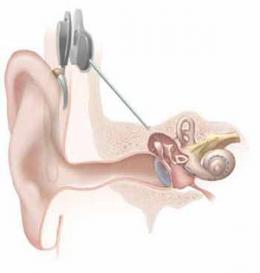 Picture this: you’re attending a lecture from a highly respected professional in your field. The lecture was well publicized and draws a large regional or national audience. When this person takes the stage to speak, however, you can hardly understand a word they say. Your peers are jotting down notes and nodding their heads in agreement, but you feel completely lost. When the lecture ends, the other attendees all begin discussing the topics amongst themselves, but once again you are left out of the conversation.
Picture this: you’re attending a lecture from a highly respected professional in your field. The lecture was well publicized and draws a large regional or national audience. When this person takes the stage to speak, however, you can hardly understand a word they say. Your peers are jotting down notes and nodding their heads in agreement, but you feel completely lost. When the lecture ends, the other attendees all begin discussing the topics amongst themselves, but once again you are left out of the conversation.
This frustrating experience might be all to familiar for conference attendees who are deaf. Organizing a conference takes a great deal of preparation, but one thing that frequently gets overlooked is the quality of sign language interpreters. After investing months of energy into creating a successful event, it only makes sense to provide equal access for all individuals. When experts take the stage to address the audience, their precise message should be clear to everyone in attendance. When attendees are debating hot industry topics and building their networks, people who are deaf deserve reliable access to the conversations around them.
Qualities of Great Conference ASL Interpreters
 Providing qualified Platform Interpreters, also known as Conference Interpreters, helps ensure that people who are deaf can access and participate equally in organized events such as lectures, seminars, workshops, trainings, and professional development events. The services of these interpreters will be utilized during formal presentations, breakout sessions, and all social opportunities throughout the conference. High quality Platform Interpreters possess a skill set which enables them to accurately communicate the important and often specific information being presented in real-time.
Providing qualified Platform Interpreters, also known as Conference Interpreters, helps ensure that people who are deaf can access and participate equally in organized events such as lectures, seminars, workshops, trainings, and professional development events. The services of these interpreters will be utilized during formal presentations, breakout sessions, and all social opportunities throughout the conference. High quality Platform Interpreters possess a skill set which enables them to accurately communicate the important and often specific information being presented in real-time.
Fluent in ASL/ English
 People around the world watched on television as the interpreter at Nelson Mandela’s funeral signed nonsense to deaf South Africans. It was a very public example of an unfortunate problem. This type of service is unacceptable, and it is the responsibility of event organizers to make sure that deaf attendees get the quality of communication access that they deserve.
People around the world watched on television as the interpreter at Nelson Mandela’s funeral signed nonsense to deaf South Africans. It was a very public example of an unfortunate problem. This type of service is unacceptable, and it is the responsibility of event organizers to make sure that deaf attendees get the quality of communication access that they deserve.
Basic fluency in the spoken and signed languages is a good start but, above and beyond that, qualified Conference Interpreters will be certified professionals with strong language skills and experience. They will also understand any topical vocabulary and common industry phrases. Since most conference interpreting happens simultaneously, meaning the interpreter is providing interpretation at the same time the message is being delivered, they must have a firm grasp of the overall message so they can follow along with the speakers.
Preparedness
 Simultaneous interpreting can be a real challenge without sufficient preparation. To accurately represent both event speakers and deaf consumers, qualified Conference Interpreters will do their homework. They will research the mission of the organization and the intention of the event. They will learn the names of the presenters and a little bit about their background. A great Platform Interpreter will request conference documents, multimedia, and speakers notes in advance. They know the speaker’s motives and are able to faithfully deliver their message.
Simultaneous interpreting can be a real challenge without sufficient preparation. To accurately represent both event speakers and deaf consumers, qualified Conference Interpreters will do their homework. They will research the mission of the organization and the intention of the event. They will learn the names of the presenters and a little bit about their background. A great Platform Interpreter will request conference documents, multimedia, and speakers notes in advance. They know the speaker’s motives and are able to faithfully deliver their message.
A high quality Conference Interpreter learns how the event will be set up and how the schedule is expected to flow before the interpreting assignment begins. They know the best place to sit or stand during each portion of the conference and will educate the organizers to be sure they are placed in such a way that deaf attendees have full access to the speaker, presentation, or group.
Multitasking
 Conferences are whirlwind events which can overwhelm individuals who aren’t skilled at managing multiple tasks. Interpreters will be utilized during all the different presentations, breakout sessions, workshops, socializing, and networking possibilities
Conferences are whirlwind events which can overwhelm individuals who aren’t skilled at managing multiple tasks. Interpreters will be utilized during all the different presentations, breakout sessions, workshops, socializing, and networking possibilities
Qualified Conference Interpreters should be flexible, yet organized to meet the needs of deaf consumers. They are confident in their preparation, yet able to roll with the changes that are often inevitable in a large coordinated event.
Team Player
 Depending on the length of the event, the type of event, and the number of deaf attendees present, interpreters will be working in a team of at least two, possibly more ASL interpreters. Supporting the team is one of the most important roles of a Conference Interpreter. Interpreters must communicate their needs while meeting the expectations of other interpreters and deaf consumers.
Depending on the length of the event, the type of event, and the number of deaf attendees present, interpreters will be working in a team of at least two, possibly more ASL interpreters. Supporting the team is one of the most important roles of a Conference Interpreter. Interpreters must communicate their needs while meeting the expectations of other interpreters and deaf consumers.
The interpreting team should be well-coordinated and always working together to ensure accurate and clear communication access.
Qualified Conference interpreters keep one another informed and on point. They will also advocate for the use of CDIs whenever appropriate.
Educator
 Qualified Conference Interpreters will ensure they have adequate working conditions. This includes contacting the event organizer and letting them know the technical requirements or providing service. Interpreters should also be ready to educate hearing entities about the basic function of an ASL interpreter and how to work with one. In some instances, interpreters must advocate to be on stage, on camera, or near a presenter.
Qualified Conference Interpreters will ensure they have adequate working conditions. This includes contacting the event organizer and letting them know the technical requirements or providing service. Interpreters should also be ready to educate hearing entities about the basic function of an ASL interpreter and how to work with one. In some instances, interpreters must advocate to be on stage, on camera, or near a presenter.
Sense of Boundaries
A good Platform Interpreter knows his or her limits and will not take on an assignment outside the scope of their skill set. Additionally, they will not accept an assignment where they feel a personal bias or ethical conflict might prevent them from effectively facilitating communication.
Conference ASL Interpreting: Choose SignNexus
SignNexus is pleased to offer qualified Conference Interpreters in New York City for a wide variety or entertainment or professional events. We make the process for securing interpreters and providing equal access as simple as possible. SignNexus offers quality services for deaf consumers with a strong emphasis on client satisfaction.
> Request Services
References:
– http://aiic.net/page/628/practical-guide-for-professional-conference-interpreters/lang/1
– http://www.streetleverage.com/2011/07/conference-interpreting-there-are-rules-of-engagement/
– http://www.streetleverage.com/2013/12/sign-language-interpreters-how-to-avoid-being-abandoned-at-the-microphone/
– http://asnwonline.com/coordinating-interpreters-for-conferences/










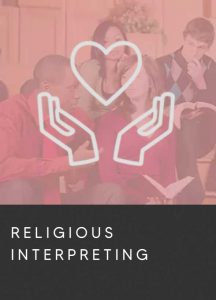
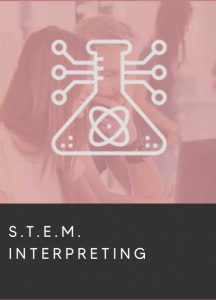
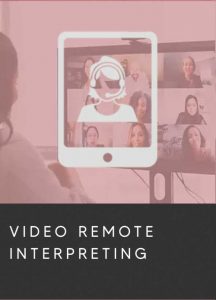
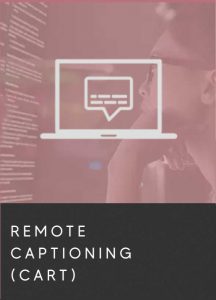

 What is American Sign Language? Is it a culture? Is it an identity? Is it a foreign language? Is it an art form? Is it for Deaf people only? ASL fills a variety of roles in different people’s lives, but most importantly: it is a communication tool. ASL is emotional expression, it is connection; it is a way for humans to build meaningful relationships.
What is American Sign Language? Is it a culture? Is it an identity? Is it a foreign language? Is it an art form? Is it for Deaf people only? ASL fills a variety of roles in different people’s lives, but most importantly: it is a communication tool. ASL is emotional expression, it is connection; it is a way for humans to build meaningful relationships.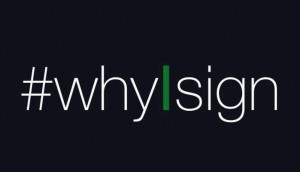 Last month Stacy Abrams, a Family Mentor Program Coordinator at Arizona Schools for the Deaf/Blind and the Arizona Early Intervention Program, launched the viral video campaign called Why I Sign
Last month Stacy Abrams, a Family Mentor Program Coordinator at Arizona Schools for the Deaf/Blind and the Arizona Early Intervention Program, launched the viral video campaign called Why I Sign 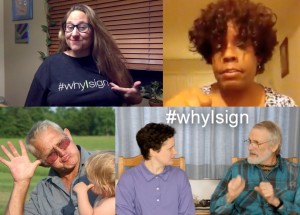 #WhyISign was so powerful because of the community pride it generated and the incredible diversity of ASL users that it showcased. The campaign also brought an important issue to the forefront: giving deaf children access to signed languages.
#WhyISign was so powerful because of the community pride it generated and the incredible diversity of ASL users that it showcased. The campaign also brought an important issue to the forefront: giving deaf children access to signed languages. Language Equality and Acquisition for Deaf Kids (LEAD-K) is a national campaign by
Language Equality and Acquisition for Deaf Kids (LEAD-K) is a national campaign by 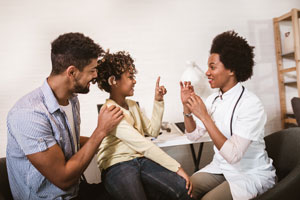 So you’re interested in Deaf culture and want to connect with the larger community. Great! But how do you go about taking that first step?
So you’re interested in Deaf culture and want to connect with the larger community. Great! But how do you go about taking that first step?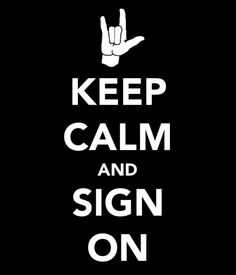 The internet has given deaf people a public voice like never before! From online discussions you can get a feel for the tones people use to communicate with each other, the types of things they find funny, and what issues they find important. Like and share content created by deaf individuals to amplify their voices, and don’t be afraid to follow new people and jump in on discussions if you have something to contribute. Help bring attention to issues that are “hot topics” or in need of support. Pay attention to what is being discussed, what rumors are going around, and what events are coming up in your area.
The internet has given deaf people a public voice like never before! From online discussions you can get a feel for the tones people use to communicate with each other, the types of things they find funny, and what issues they find important. Like and share content created by deaf individuals to amplify their voices, and don’t be afraid to follow new people and jump in on discussions if you have something to contribute. Help bring attention to issues that are “hot topics” or in need of support. Pay attention to what is being discussed, what rumors are going around, and what events are coming up in your area.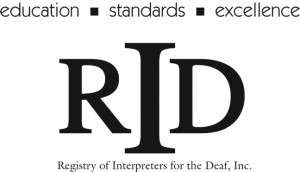 If meeting people off the internet isn’t up your alley, there are plenty of other options to connect with the Deaf community. Try Google searching for a Deaf coffee chat or Deaf club in your city. If you live near Rochester, NY, check out the National Technical Institute of the Deaf (NTID) campus. Or, if you live near Washington, DC, look for events at Gallaudet University. Don’t be afraid to reach out to local deaf organizations or the local interpreter training program for more information, you will find that most people are happy to help.
If meeting people off the internet isn’t up your alley, there are plenty of other options to connect with the Deaf community. Try Google searching for a Deaf coffee chat or Deaf club in your city. If you live near Rochester, NY, check out the National Technical Institute of the Deaf (NTID) campus. Or, if you live near Washington, DC, look for events at Gallaudet University. Don’t be afraid to reach out to local deaf organizations or the local interpreter training program for more information, you will find that most people are happy to help. If you are training to be an ASL interpreter, sign up with your local RID chapter. It helps to not only be connected with the Deaf community, but also to participate in the Interpreting community. Learn about upcoming workshops and events. Meet other interpreters from all backgrounds, expertise, and experience levels. If anyone understands how scary it can be to push yourself outside your comfort zone, it’s others who work in this field.
If you are training to be an ASL interpreter, sign up with your local RID chapter. It helps to not only be connected with the Deaf community, but also to participate in the Interpreting community. Learn about upcoming workshops and events. Meet other interpreters from all backgrounds, expertise, and experience levels. If anyone understands how scary it can be to push yourself outside your comfort zone, it’s others who work in this field.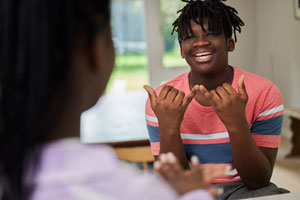 If you want to get involved with the Deaf community, there is no reason not to. Deaf people spend their lives marginalized by the hearing majority culture, so taking the initiative to form a connection is generally appreciated. Start by practicing your ASL and learning about the different methods of deaf-hearing communication, which will lessen any anxiety about engaging new people. Educate yourself on Deaf issues, understand what it means to be an ally, and attend an upcoming event in your area. Then just find a friendly face in the room, and strike up a conversation!
If you want to get involved with the Deaf community, there is no reason not to. Deaf people spend their lives marginalized by the hearing majority culture, so taking the initiative to form a connection is generally appreciated. Start by practicing your ASL and learning about the different methods of deaf-hearing communication, which will lessen any anxiety about engaging new people. Educate yourself on Deaf issues, understand what it means to be an ally, and attend an upcoming event in your area. Then just find a friendly face in the room, and strike up a conversation! Picture this: you’re attending a lecture from a highly respected professional in your field. The lecture was well publicized and draws a large regional or national audience. When this person takes the stage to speak, however, you can hardly understand a word they say. Your peers are jotting down notes and nodding their heads in agreement, but you feel completely lost. When the lecture ends, the other attendees all begin discussing the topics amongst themselves, but once again you are left out of the conversation.
Picture this: you’re attending a lecture from a highly respected professional in your field. The lecture was well publicized and draws a large regional or national audience. When this person takes the stage to speak, however, you can hardly understand a word they say. Your peers are jotting down notes and nodding their heads in agreement, but you feel completely lost. When the lecture ends, the other attendees all begin discussing the topics amongst themselves, but once again you are left out of the conversation. Providing qualified Platform Interpreters, also known as Conference Interpreters, helps ensure that people who are deaf can access and participate equally in organized events such as lectures, seminars, workshops, trainings, and professional development events. The services of these interpreters will be utilized during formal presentations, breakout sessions, and all social opportunities throughout the conference. High quality Platform Interpreters possess a skill set which enables them to accurately communicate the important and often specific information being presented in real-time.
Providing qualified Platform Interpreters, also known as Conference Interpreters, helps ensure that people who are deaf can access and participate equally in organized events such as lectures, seminars, workshops, trainings, and professional development events. The services of these interpreters will be utilized during formal presentations, breakout sessions, and all social opportunities throughout the conference. High quality Platform Interpreters possess a skill set which enables them to accurately communicate the important and often specific information being presented in real-time. People around the world watched on television as the interpreter at Nelson Mandela’s funeral signed nonsense to deaf South Africans. It was a very public example of an unfortunate problem. This type of service is unacceptable, and it is the responsibility of event organizers to make sure that deaf attendees get the quality of communication access that they deserve.
People around the world watched on television as the interpreter at Nelson Mandela’s funeral signed nonsense to deaf South Africans. It was a very public example of an unfortunate problem. This type of service is unacceptable, and it is the responsibility of event organizers to make sure that deaf attendees get the quality of communication access that they deserve. Simultaneous interpreting can be a real challenge without sufficient preparation. To accurately represent both event speakers and deaf consumers, qualified Conference Interpreters will do their homework. They will research the mission of the organization and the intention of the event. They will learn the names of the presenters and a little bit about their background. A great Platform Interpreter will request conference documents, multimedia, and speakers notes in advance. They know the speaker’s motives and are able to faithfully deliver their message.
Simultaneous interpreting can be a real challenge without sufficient preparation. To accurately represent both event speakers and deaf consumers, qualified Conference Interpreters will do their homework. They will research the mission of the organization and the intention of the event. They will learn the names of the presenters and a little bit about their background. A great Platform Interpreter will request conference documents, multimedia, and speakers notes in advance. They know the speaker’s motives and are able to faithfully deliver their message. Conferences are whirlwind events which can overwhelm individuals who aren’t skilled at managing multiple tasks. Interpreters will be utilized during all the different presentations, breakout sessions, workshops, socializing, and networking possibilities
Conferences are whirlwind events which can overwhelm individuals who aren’t skilled at managing multiple tasks. Interpreters will be utilized during all the different presentations, breakout sessions, workshops, socializing, and networking possibilities Qualified Conference Interpreters will ensure they have adequate working conditions. This includes contacting the event organizer and letting them know the technical requirements or providing service. Interpreters should also be ready to educate hearing entities about the basic function of an ASL interpreter and how to work with one. In some instances, interpreters must advocate to be on stage, on camera, or near a presenter.
Qualified Conference Interpreters will ensure they have adequate working conditions. This includes contacting the event organizer and letting them know the technical requirements or providing service. Interpreters should also be ready to educate hearing entities about the basic function of an ASL interpreter and how to work with one. In some instances, interpreters must advocate to be on stage, on camera, or near a presenter.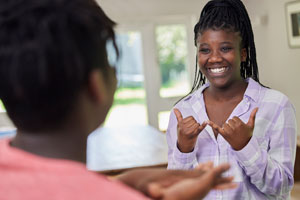 Everyone at the office calls your Deaf coworker Diane, but she is better known in the Deaf community as “Bright.” Bright is a genuine person who is always smiling and positive. Her cheerful name sign captures her personality way better than the name “Diane” ever could!
Everyone at the office calls your Deaf coworker Diane, but she is better known in the Deaf community as “Bright.” Bright is a genuine person who is always smiling and positive. Her cheerful name sign captures her personality way better than the name “Diane” ever could! Once you have a name sign, good luck changing it on your own! On the other hand, deaf people might change your name sign if they feel a different name suits you better. For example, I was given a name sign by my mother who is deaf. My original name sign is an “L” that is waving, because as a child I was always waving at everyone. Once I moved to New York City and became involved in a much larger Deaf community, people began referring to me as “LC,” which identifies me by my initials so I can not be confused with someone else who has the same name sign. In my intimate circles, I remain true to my birth name sign, but in NYC my name sign has evolved.
Once you have a name sign, good luck changing it on your own! On the other hand, deaf people might change your name sign if they feel a different name suits you better. For example, I was given a name sign by my mother who is deaf. My original name sign is an “L” that is waving, because as a child I was always waving at everyone. Once I moved to New York City and became involved in a much larger Deaf community, people began referring to me as “LC,” which identifies me by my initials so I can not be confused with someone else who has the same name sign. In my intimate circles, I remain true to my birth name sign, but in NYC my name sign has evolved. An ASL name is so much more than a nickname, it becomes a major part of your Deaf identity. Because an individual can not simply change their own name sign, these names carry a history and personality all their own. Each facial expression and classifier, which is a descriptive handshape, gives a little insight into who the individual is and how they are viewed by others. Take my deaf niece Jaisy, for example, who is known as Same. When Jaisy was just a newborn, her big sister took one look at her and signed “same” because the baby had the same hair and eye color as her. Her name is Jaisy, but people who know her use the sign for “same” to represent her in conversation. When she gets a little older, her mother will give her a new sign name that is more appropriate for her growing personality.
An ASL name is so much more than a nickname, it becomes a major part of your Deaf identity. Because an individual can not simply change their own name sign, these names carry a history and personality all their own. Each facial expression and classifier, which is a descriptive handshape, gives a little insight into who the individual is and how they are viewed by others. Take my deaf niece Jaisy, for example, who is known as Same. When Jaisy was just a newborn, her big sister took one look at her and signed “same” because the baby had the same hair and eye color as her. Her name is Jaisy, but people who know her use the sign for “same” to represent her in conversation. When she gets a little older, her mother will give her a new sign name that is more appropriate for her growing personality. After months of worrying about nursery colors and baby names, the big day has finally arrived! Your healthy bundle of joy is born with 10 fingers and 10 toes; crying and cooing in your arms. The baby is beautiful, your family is complete, everything feels perfect! Fast forward a few months down the road when, during a routine checkup, your pediatrician informs you that your infant can not hear. Suddenly, you’ve become the parent of a deaf child. What now?
After months of worrying about nursery colors and baby names, the big day has finally arrived! Your healthy bundle of joy is born with 10 fingers and 10 toes; crying and cooing in your arms. The baby is beautiful, your family is complete, everything feels perfect! Fast forward a few months down the road when, during a routine checkup, your pediatrician informs you that your infant can not hear. Suddenly, you’ve become the parent of a deaf child. What now?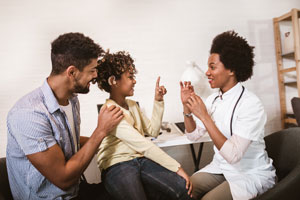
 Selecting a method of communication for your child majorly influences where he or she will fit into society, and is critical to psychological development. There are several communication options to consider, depending on the child’s degree of hearing loss. Some parents choose to teach their deaf child to speak English using hearing aids and intensive speech training. In this approach, the child does not identify as deaf, and does not learn deaf communication.
Selecting a method of communication for your child majorly influences where he or she will fit into society, and is critical to psychological development. There are several communication options to consider, depending on the child’s degree of hearing loss. Some parents choose to teach their deaf child to speak English using hearing aids and intensive speech training. In this approach, the child does not identify as deaf, and does not learn deaf communication.